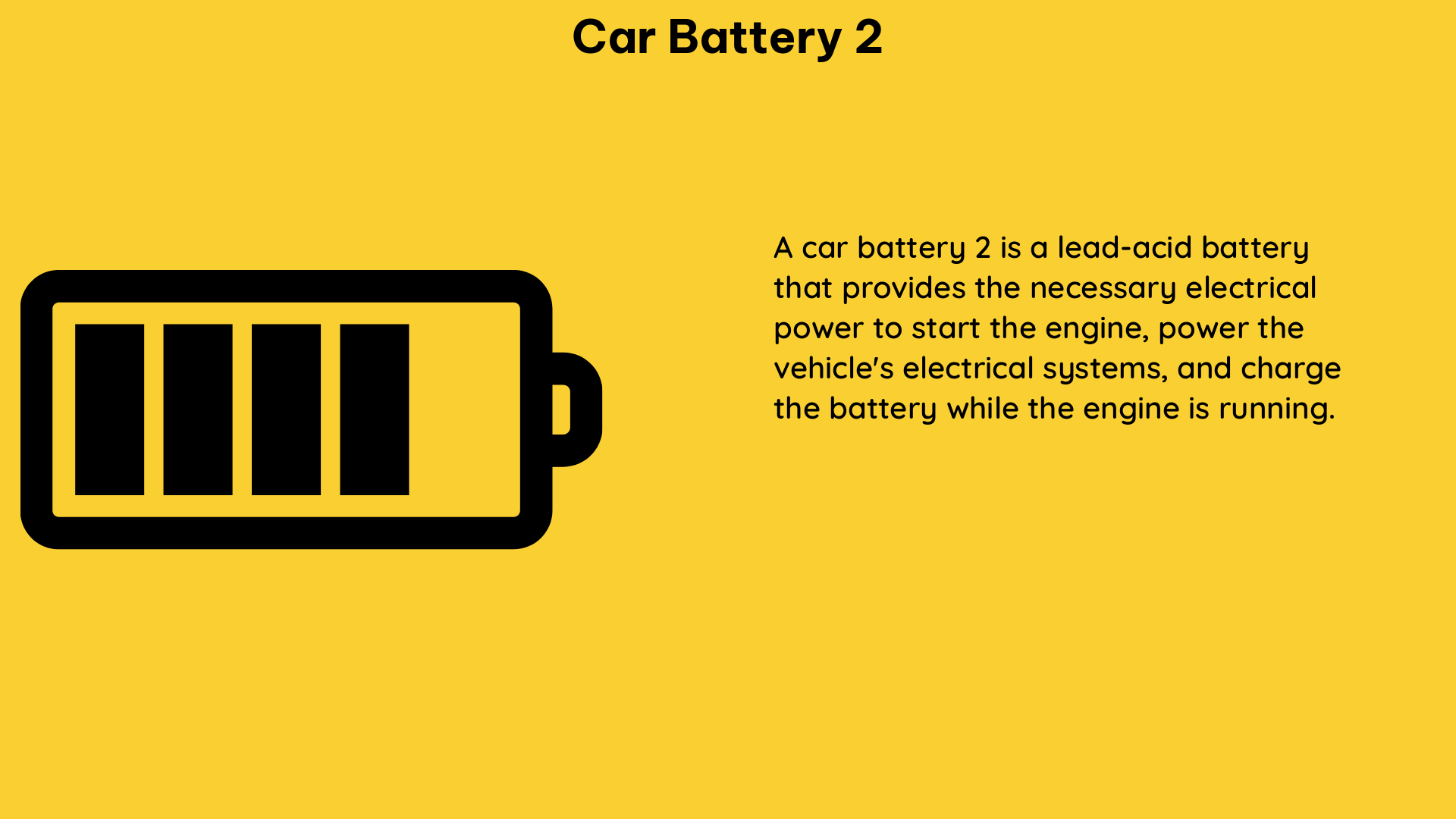Car batteries are an essential component of modern vehicles, and understanding their technical specifications is crucial for maintaining their performance and longevity. This article will focus on Car Battery 2, providing detailed information on its technical specifications, age determination, and maintenance.
Technical Specifications
Car Battery 2, like other lead-acid batteries, has specific technical specifications that determine its performance and lifespan. These specifications include:
-
Voltage: Car Battery 2 typically has a voltage of 12 volts (V), which is the standard for most automotive applications. The voltage range for Car Battery 2 can vary from 12.6V to 13.2V when the battery is fully charged.
-
Capacity: The battery’s capacity is measured in ampere-hours (Ah) and indicates the amount of electrical charge it can store. For Car Battery 2, the capacity may vary depending on the manufacturer and model, but a typical range is between 40 to 100 Ah. Higher capacity batteries can provide more power for accessories and longer engine cranking times.
-
Cold Cranking Amps (CCA): This measures the battery’s ability to start an engine in cold temperatures. A higher CCA rating indicates better performance in cold weather. The CCA rating for Car Battery 2 can range from 500 to 900, depending on the manufacturer and model. Batteries with higher CCA ratings are better suited for vehicles in colder climates.
-
Reserve Capacity (RC): This indicates how long the battery can supply a minimum voltage (usually 10.5V) to keep the vehicle’s electrical systems running when the engine is off. The RC for Car Battery 2 can range from 80 to 150 minutes, depending on the manufacturer and model. Batteries with higher RC can power the vehicle’s electronics for a longer period during engine-off conditions.
Age Determination

Determining a car battery’s age is essential for assessing its performance and deciding when to replace it. There are two common methods for determining a battery’s age:
-
Date Code: Most battery manufacturers stamp a date code onto the battery case, indicating the manufacturing date. The code usually consists of a combination of numbers and letters, with the first two digits representing the year and the following digits representing the week of manufacture. For example, a date code of “2305” would indicate the battery was manufactured in the 23rd week of 2015.
-
Sticker: Some batteries may have a round sticker with a date in the format MM/YY, representing the month and year of manufacture. This sticker is typically found on the top or side of the battery. For instance, a sticker with “09/22” would indicate the battery was manufactured in September 2022.
Maintenance and DIY Tips
Proper maintenance is crucial for ensuring the longevity and performance of Car Battery 2. Here are some maintenance tips and DIY procedures:
-
Check the battery’s terminals and connections for corrosion: Corrosion can impede the flow of electricity and reduce the battery’s performance. Clean any corrosion using a wire brush and a solution of baking soda and water. Ensure the terminals are tight and free of any buildup.
-
Test the battery’s voltage: Use a digital multimeter to check the battery’s voltage. A fully charged 12V battery should read between 12.6V and 12.8V. If the voltage is significantly lower, the battery may need to be charged or replaced. Perform the voltage test with the engine running and the engine off to check the charging system’s performance.
-
Check the battery’s fluid level: If the battery has removable caps, check the fluid level. The fluid should be just above the lead plates inside the battery. If the level is low, add distilled water to bring it up to the recommended level. Avoid overfilling, as this can lead to leaks and corrosion.
-
Clean the battery tray and hold-down: Remove the battery and clean the tray and hold-down with a wire brush and baking soda solution. This will help prevent corrosion and ensure a secure fit for the battery.
-
Monitor the battery’s performance: Keep an eye on the battery’s performance, such as cranking power, charge retention, and any signs of swelling or leakage. These can indicate the battery is nearing the end of its lifespan and may need to be replaced.
By understanding the technical specifications, age determination, and proper maintenance of Car Battery 2, you can ensure your vehicle’s electrical system remains reliable and efficient. Always refer to the manufacturer’s recommendations for specific maintenance and replacement guidelines.
References:
– https://www.youtube.com/watch?v=KhURj-kBr28
– https://www.reddit.com/r/askcarguys/comments/tkm5b3/does_a_round_sticker_on_a_battery_921_represent/
– https://mechanics.stackexchange.com/questions/22424/2-volts-on-car-battery

The lambdageeks.com Core SME Team is a group of experienced subject matter experts from diverse scientific and technical fields including Physics, Chemistry, Technology,Electronics & Electrical Engineering, Automotive, Mechanical Engineering. Our team collaborates to create high-quality, well-researched articles on a wide range of science and technology topics for the lambdageeks.com website.
All Our Senior SME are having more than 7 Years of experience in the respective fields . They are either Working Industry Professionals or assocaited With different Universities. Refer Our Authors Page to get to know About our Core SMEs.